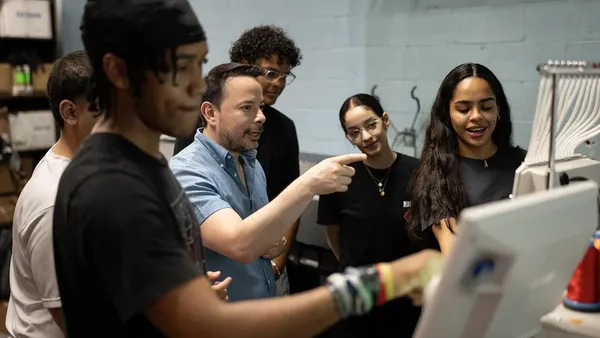Dive Brief:
- More states are recognizing the need to include financial literacy skills: 45 states plus the District of Columbia include personal finance in literacy standards and 17 states plus D.C require a high school class on the topic.
- The lack of knowledge of these literacy skills is apparent in the adult population as roughly two-thirds of Americans aren’t able to pass a basic financial literacy test and consumer debt rose to its highest level this summer.
- The Jump$tart Coalition offers a number of resources including research, national standards on the topic and tools to evaluate the myriad financial literacy teaching tools and curriculum available.
Dive Insight:
After the ability to read, write and do basic math, financial literacy is arguably one of the most important skills schools can teach to students. Money matters impact everyone at the most basic level of survival. The issue affects the well-being of our society as well. Massive personal debt and the failure to pay off loans has a traumatic impact on our economy, affecting buying and selling patterns and business growth or decline. Money problems are also cited as a root cause of 80% of divorces in our nation.
At the high school level, financial literacy can be incorporated in an economics class, which many states require; in consumer math classes, which unfortunately are often reserved for students not taking higher-level math classes; or in life skills classes. There are numerous resources available to teach these skills including ones offered by the Federal Reserve, OppU, and Take Charge Today. As Jim King, a financial literacy curriculum developer noted: “High school students are our next generation of leaders, decision makers, and givers,” he says. “They have been failing basic financial literacy tests on an annual basis, and we need to equip them with the understanding of how money works to set them up for success.”
On the elementary level, financial literacy skills can be easily included in math lessons. One of the most effective ways to teach addition and subtraction of money is by “playing store.” During this activity, students can buy and sell items (which can be pictures of items) using play money in order to learn how to make change. This essential skill combines the teaching of math with a necessary life skill and makes the whole notion of math more relevant to students.





 Dive Awards
Dive Awards






